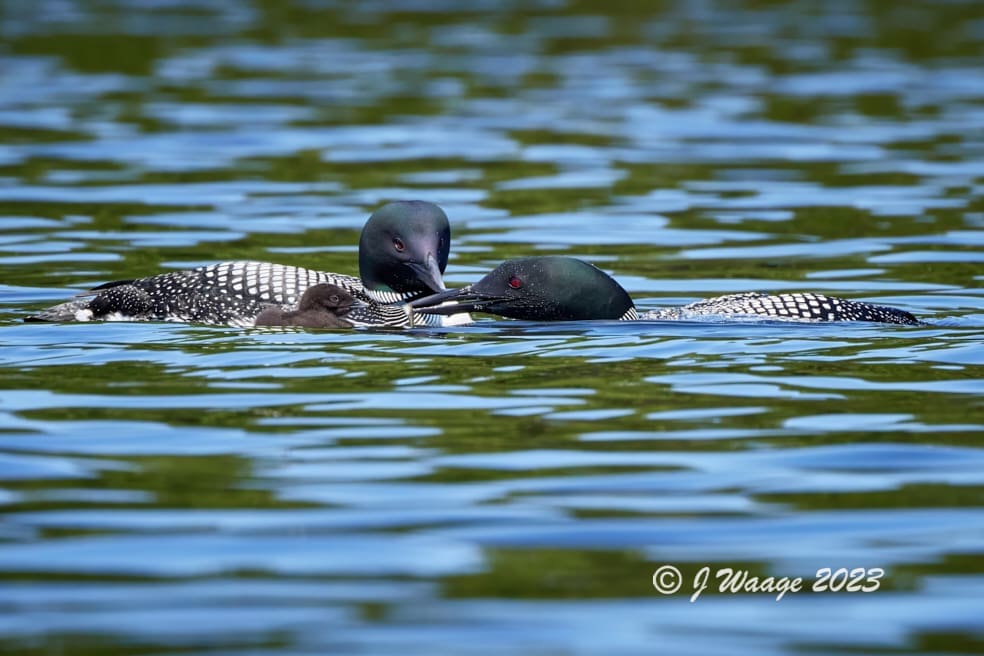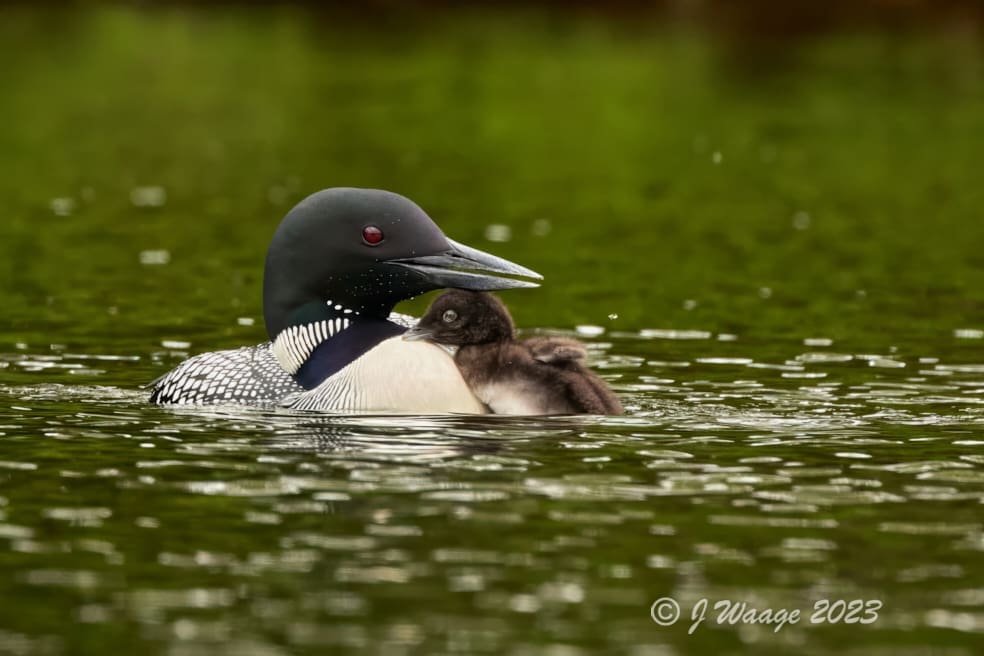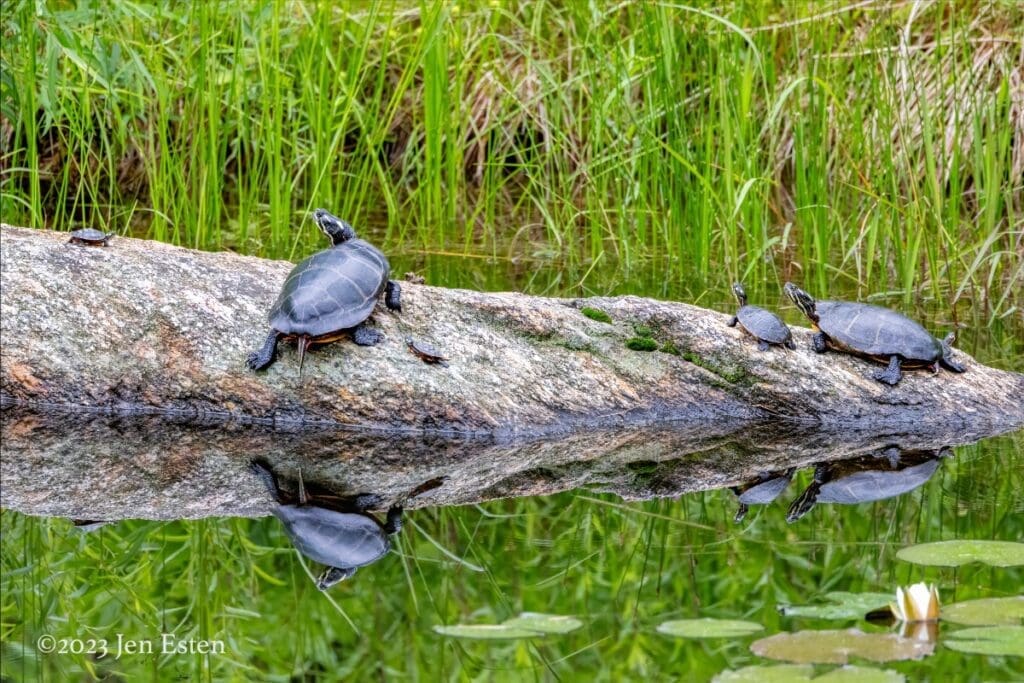Slow Start to Summer
2023, No. 5 — July 5

Smokey, Rainy Days
The weather has given us relatively few days for photography. It has not bothered the Loons much – they’ve had the Lake pretty much to themselves! Without a lot of boat traffic, Paisley is getting plenty of attention and food and growing fast.

The photos below of Paisley with Mom and Dad are from June 25th. You will see a big size change in the next week or two.


Paisley is already diving for short periods, spending time alone while the parents are finding food, and just being cute….
 Let’s remember that sunny days will bring more boat traffic and we all must be watchful for the Loons. As Paisley grows, the family will be spending more time further from shore.
Let’s remember that sunny days will bring more boat traffic and we all must be watchful for the Loons. As Paisley grows, the family will be spending more time further from shore.

Slow Start in Turtle Cove
The rain has not been much of a problem for some of the Turtle Cove residents. Plants like Spatterdock (Yellow Pond Lily) are growing and starting to flower.

Warblers and other birds are nesting and breeding.

Blackburnian Warbler

Chestnut-sided Warbler

Common Yellowthroat Warbler
Dragonflies and Damselflies are emerging and shedding their nymphal skins. Until their wings harden they are very vulnerable to wind and rain. We probably have already lost a lot of them to the rain. Some of the early (May-June) dragonflies, like the Chalk-fronted Corporal below, are still around.

The freshly emerged Calico Pennant below, a June-July species, is inflating and drying its wings after recently emerging from its larval skin. It has spent a year below the surface feeding and growing and now has a few weeks to mate and lay eggs for next year’s brood.

Dragonflies have their wings spread at rest and large eyes that meet on top of their head. Damselflies have their wings closed over their back or slightly open at rest and separated eyes. Damselflies are usually smaller and you have to get a little closer to appreciate their beauty. Two common ones are:

Male Eastern Forktail

Male of one of several Bluet species (probably a Familiar Bluet)
We will return to explore the biology and behavior of these amazing creatures whose ancestors were flying around for millions of years before there were birds and butterflies.
Turtle Pond
Turtles have made their appearance in Turtle Cove and elsewhere. The weather has also affected them. However, their problem is the lack of sun! We have had the pleasure of watching the Painted Turtles that have colonized our small pond dug 6 years ago.
Based on size, the turtles on the rock below include at least three, maybe four generations. The smallest ones likely hatched in November and hibernated in the pond.

Painted Turtles, the most common species in North America, are found from coast to coast. Those in New Hampshire are one of four subspecies, the Eastern Painted Turtle.
Being cold blooded, turtles need to sunbathe to elevate body temperature which in turn raises metabolic rate. Sunbathing also periodically dries their shells, helping control mold. Rocks and logs are safe places to get some sun.

In addition to the sun’s warmth, they need the UVB rays to produce Vitamin D3 for processing calcium required for shell and bone growth. UVA rays also help with several body functions. Sunning spots can get crowded! Adding logs and rocks to a pond can help.

Rocks and logs are not the only place to sunbathe if you are very small!

These turtles feed on aquatic plants, algae and small aquatic invertebrates and fish. Young turtles are mostly meat eaters but become more vegetarian as they age. They can live for 30 years or more! The little tyke below gives you an idea of where they got their name.

Bye for now.. Jon and Jen

